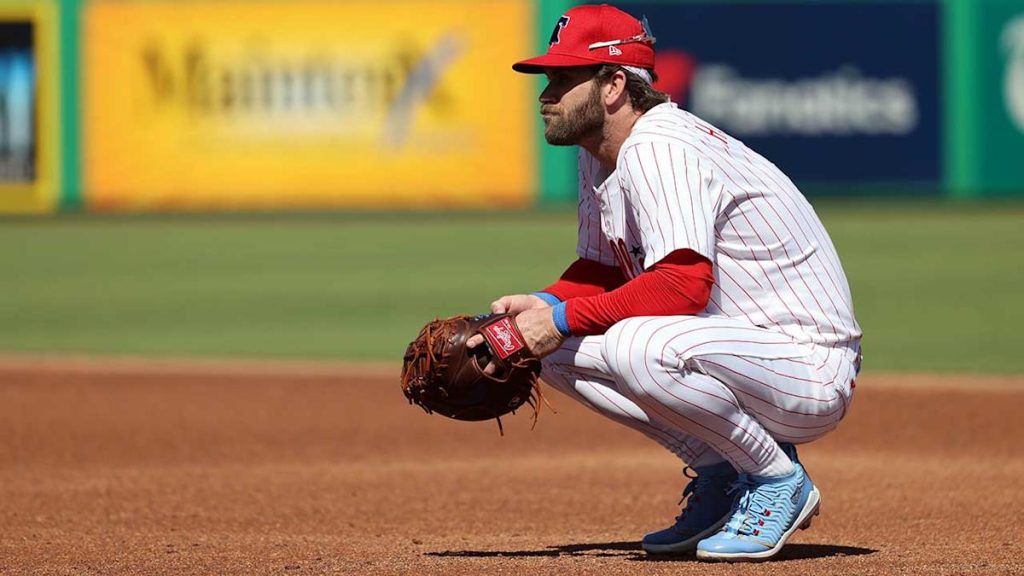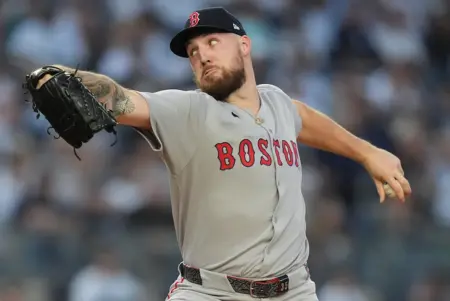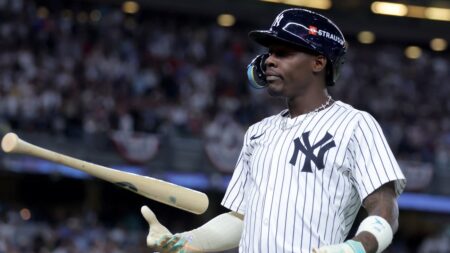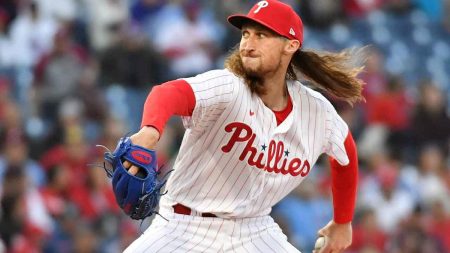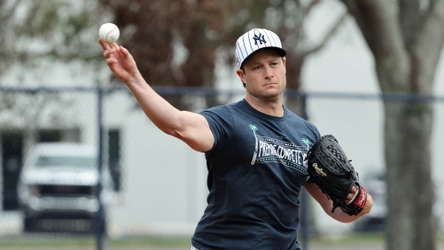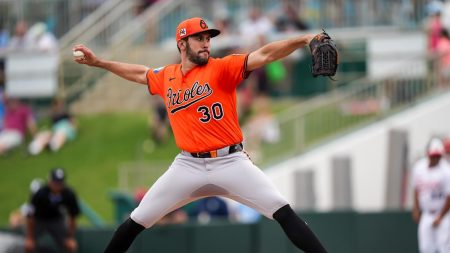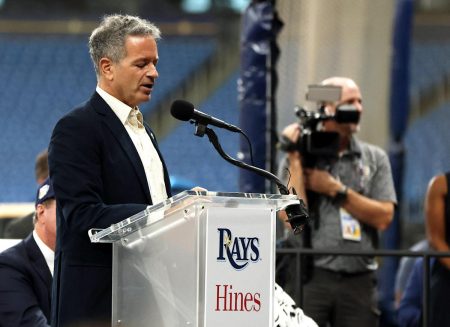Harper’s Outfield Return: A Winter of Mixed Messages
At separate points this winter, Bryce Harper, Phillies president of baseball operations Dave Dombrowski, and manager Rob Thomson all downplayed the idea when asked about Harper ever returning to the outfield. Harper, arriving in Clearwater for spring training, stated he hadn’t even considered it. Dombrowski echoed this sentiment earlier in the offseason, noting it wasn’t being discussed. Thomson also weighed in, saying it wasn’t under consideration. However, Harper’s recent comments to Ken Rosenthal at The Athletic have reignited the debate. Harper revealed he did indeed discuss the possibility with the Phillies this offseason, expressing his willingness to return to the outfield if it meant bringing in a high-impact first baseman. He specified, “I talked to them this offseason about that, just in case a guy was available (at first) that we needed to have, needed to get. I’d be more than open to it if we had a guy like that, who was going to change our lineup or change the demeanor of our team.” This openness to a position change underscores Harper’s commitment to the team’s success, even as he remains content playing first base.
Practical Considerations and Player Health
Despite Harper’s willingness, the likelihood of him returning to the outfield remains low for several practical reasons. At 32 years old, Harper hasn’t played outfield since the first week of 2022. His history with back injuries over the past six seasons with the Phillies adds to the concern. Moreover, the initial reason he stopped playing right field was due to tearing the UCL in his throwing elbow, which necessitated Tommy John surgery. As Harper enters Year 7 of his 13-year contract, the Phillies’ top priority is undoubtedly preserving his health. Moving him to a more physically demanding position like outfielder could exacerbate existing issues and potentially shorten his career. The organization’s cautious approach is understandable, given the significant investment they made in Harper and his importance to the team’s long-term success.
The Right First Baseman: A Contender’s Dream
Harper’s willingness to switch positions is contingent on the right first baseman joining the team. He isn’t suggesting a move for just any player; it would need to be someone capable of significantly altering the lineup’s dynamics or improving the team’s overall performance. During the offseason, Harper had Pete Alonso in mind, a powerful slugger who can hit 35 to 40 home runs. Alonso is also a free agent after the 2025 season because his two-year contract with the Mets includes an opt-out clause. This means the Phillies have a window of opportunity to make a move if they see fit. Next offseason, another candidate could be Vladimir Guerrero Jr., who recently told ESPN that his last offer to the Blue Jays was for 14 years and nearly $600 million. Guerrero, a free agent after 2025, is another potential game-changer at first base. Harper’s flexibility in this regard shows his dedication to helping the Phillies build a contender’s lineup.
The 2025 Free-Agent Market: A Glance Ahead
The 2025-26 free-agent class of first basemen is robust and includes names like Guerrero, Alonso, Josh Naylor, and veteran players such as Paul Goldschmidt and Josh Bell. Each of these players brings a unique set of skills to the table, but Guerrero and Alonso stand out for their power hitting and overall impact. The Phillies have been active in the free-agent market in recent years, and their interest in upgrading at first base is evident. Harper’s willingness to move to the outfield for a high-impact player like Alonso or Guerrero could be a significant factor in their decision-making process. However, the Phillies will need to weigh the potential benefits against the risks associated with Harper’s health to make an informed choice.
Thomson’s Lineup Strategy: Balancing Lefties and Righties
Manager Rob Thomson has outlined his preferences for the batting order, and some clear priorities have emerged. Trea Turner is likely to lead off, leveraging his speed and on-base skills to set the table. Thomson still wants to split up left-handed hitters Harper and Kyle Schwarber, even though they both performed well against same-handed pitching last season. Harper, who has been a crucial part of the Phillies’ lineup, has made it known that he prefers not to lead off. Thomson also emphasized his intention to keep Schwarber no lower than fourth in the lineup. Additionally, he aims to maintain consistency in the top four or five spots, regardless of whether the Phillies are facing a left-handed or right-handed starter. This balanced approach ensures that the lineup remains potent and adaptable to various matchups.
The Likely Opening Day Lineup
Given Thomson’s preferences and the current roster, the likeliest Opening Day lineup for the Phillies in 2025 looks similar to the one we hypothesized when Thomson began discussing Turner’s potential as the leadoff hitter. The lineup would likely be:
- Trea Turner, SS – Turner’s speed and ability to get on base make him an ideal leadoff man.
- Bryce Harper, 1B (L) – Harper’s power and on-base skills are best utilized in the cleanup spot.
- Alec Bohm, 3B – Bohm brings a solid all-around game to the three-hole.
- Kyle Schwarber, DH (L) – Schwarber’s slugging ability makes him a perfect fit in the cleanup or fifth spot.
- Nick Castellanos, RF – Castellanos provides a right-handed bat and additional power.
- Max Kepler, LF (L) – Kepler’s left-handed bat and on-base skills round out the middle of the lineup.
- Bryson Stott, 2B (L) – Stott’s versatility and defensive skills make him a valuable presence.
- J.T. Realmuto, C – Realmuto’s bat and leadership are crucial at the bottom of the order.
- Brandon Marsh, CF (L) – Marsh’s speed and defensive capabilities make him a dynamic option.
The Phillies will need to navigate the challenge of having back-to-back lefties somewhere in the bottom of the order, whether it’s Kepler and Stott or Stott and Marsh. This lineup configuration aims to maximize the team’s offensive potential while maintaining a balanced approach against both left-handed and right-handed pitching.

